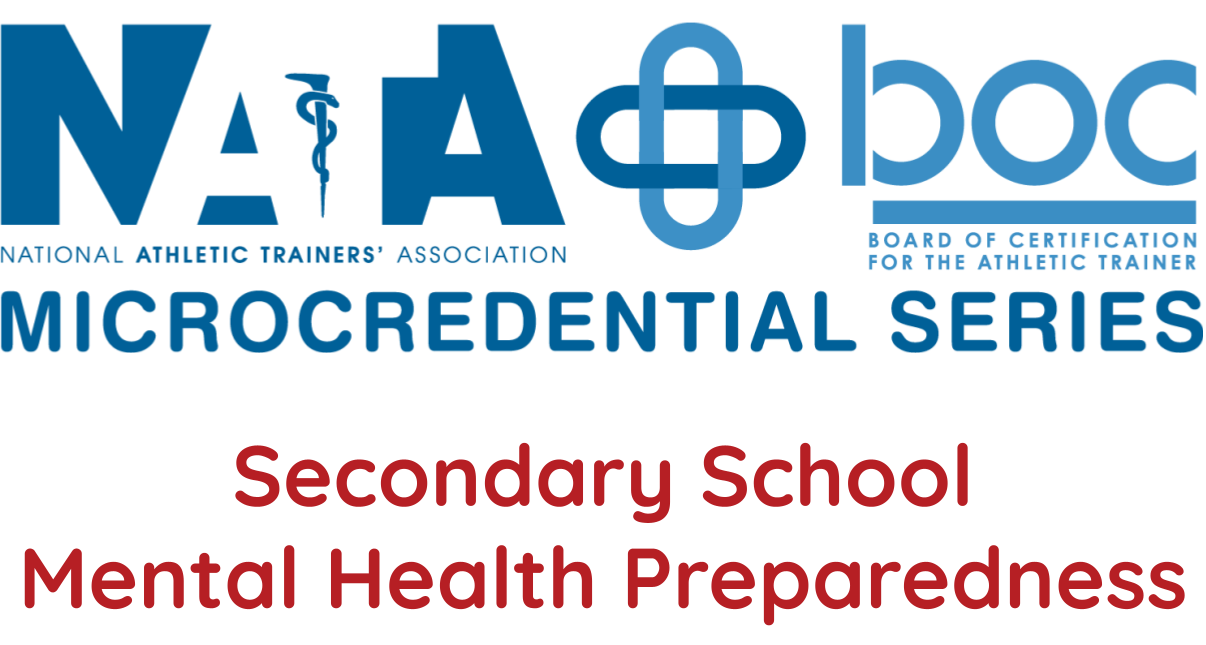
Beyond Performance: Motor Imagery in Clinical Diagnosis, Intervention and Injury Prevention
-
Register
- Non-member - $25
- Member - Free!
- Student - Free!
- Staff - Free!
- Certified Student - Free!
- Retired - $15
This is an encore presentation from NATA 2022 in Philadelphia, offering a second chance to experience the event's valuable content and insights.
Abstract:
Individuals often use motor imagery to improve performance. Further, inclusion of imagery strategies in the intervention plan to treat pain and facilitate functional recovery has been encouraged in textbooks and professional literature. Recent evidence suggests that using a systematic approach to motor imagery can be valuable in diagnosis, intervention and injury prevention for the ankle, knee, and shoulder. In this session, the use of a graded approach to motor imagery for musculoskeletal examination and intervention will be presented. In addition, the current evidence related to the use of motor imagery for therapeutic and preventative interventions will be discussed.
Learning Objectives:
- Identify the components of a graded approach to motor imagery in patients with musculoskeletal injury and for injury prevention.
- Illustrate the underlying neurobiological foundations of this approach.
- Outline the application of motor imagery as a component of injury prevention and therapeutic intervention programs.
- Identify intervention strategies using a graded approach to motor imagery.
Level:
Advanced
Domain(s):
Domain 1: Risk Reduction Wellness and Health Literacy
CEUs:
1.0 Category A
Keywords: clinical reasoning, left/right judgments, motor learning, motor imagery, injury prevention
Enhanced Access On-Demand Course Expiration:
Access to this course will expire at the end of the membership year on December 31 at 11:59 p.m. CST.
For full details, refer to the Expiration Date Policy on our FAQ page.
Jody (J.C.) Andersen, PhD, PT, ATC
J.C. Andersen is an Associate Professor of Health Sciences and Human Performance and is the director of the CAATE-accredited Athletic Training Program at The University of Tampa. In addition, he provides clinical care to UT athletes one half day per week. He has 37 years of clinical and teaching experience in athletic training and sports and orthopedic physical therapy at several universities. While at Upper Iowa University, Andersen served as the head athletic trainer and instructor of athletic training while providing care for athletes across all 16 NCAA Division III teams. Following this experience, Andersen spent time in teaching and clinical practice at Ohio University working primarily with the NCAA Division I wrestling team and assisting with multiple other sports including ice hockey. Andersen then joined the faculty at Georgia Southern University as an assistant professor of athletic training and also worked clinically in the AT Clinic with multiple Division I team and individual sport athletes. Following this experience, Andersen became an assistant professor of physical therapy and athletic training at Armstrong Atlantic State University with teaching responsibilities in both areas. In addition, Andersen worked as a consulting athletic trainer and physical therapist with the university’s NCAA Division II athletes.
Andersen has spoken regionally and nationally on evidence-based diagnosis, legal issues in clinical education, professional behavior in athletic training, emergency preparedness, running injuries, HIV/AIDS and athletes and motor imagery applications in athletic training practice. He has published articles in Medicine and Science in Sports and Exercise, the Journal of Athletic Training, International Journal of Athletic Training and Therapy, and the Journal of Orthopaedic and Sports Physical Therapy, among others. In addition, he is a peer reviewer for the Journal of Athletic Training, International Journal of Sports Physical Therapy, Journal of Women’s and Pelvic Health Physical Therapy and the Journal of Orthopaedic and Sports Physical Therapy.
Andersen has been an active member of the NATA since 1983 and the Southeast Athletic Trainer’s Association (SEATA) since 1992. His professional involvement in SEATA began in 1993 and since that time served on the Research and Education Committee and was the committee co-chair from 1997 to 2004. Andersen also served as the Georgia Athletic Trainers’ Association secretary-treasurer and then treasurer from 1996 to 2003. He is a peer reviewer for the Commission on Accreditation for Athletic Training Education. He is also a member of the Athletic Trainers Association of Florida, the American Physical Therapy Association and the Florida Physical Therapy Association.
Education and Certifications:
Bachelor of Science in Athletic Training from Mankato State University
Master of Science in Physical Therapy from Texas Woman’s University
Doctor of Philosophy in Biomedical Sciences and Measurement and Statistics from Ohio University
BOC Certified Athletic Trainer and a Florida licensed athletic trainer
Board Certified Clinical Specialist in Sports Physical Therapy
Florida licensed physical therapist
American Physical Therapy Association (APTA) credentialed clinical instructor


